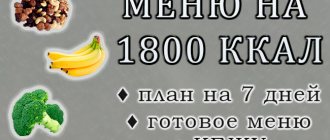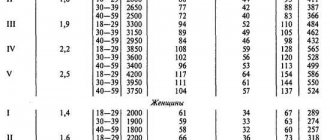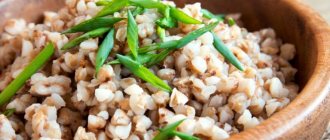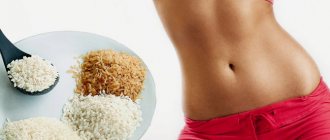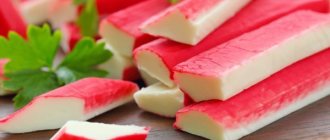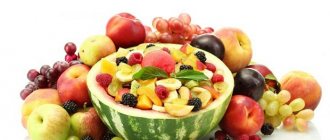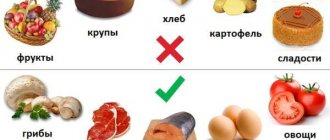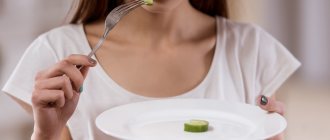Women very often need to lose weight in a short time. This can be absolutely any occasion: a wedding, vacation, alumni meeting. But there is only one problem. You need to quickly lose a few kilos. A diet of 500 calories a day will come to the rescue. She is able to create a miracle in the shortest possible time. But only in the shortest possible time. Why? The answer can be found in this article. And also everything about this diet and the results of losing weight on it.
What are calories
Calories measure any energy, including that obtained from food. The body spends it to ensure vital functions, to perform certain reactions, etc. Many people may ask: “How will this information help me lose weight?”
If you ask any nutritionist or athlete, they will confidently answer: in order to lose weight, you need to spend more calories than the body receives. Therefore, you need to calculate how much energy a person spends per day, and based on this, select the daily calorie intake.
Measure, sequence and regularity
Typically, women weighing about 55 kg need an average of about 1,500 kilocalories per day for a normal life. When you turn on the fasting mode, do not even try to go down to the level of 1200 kcal per day or lower - this is dangerous for your health. At the very least, you need to consult a nutritionist or a good specialist trainer. If your daily consumption exceeds 2-3 thousand kcal and your weight, of course, is more than 55 kg (otherwise why lose weight?), then you can safely limit yourself to 500 kcal or more in food.
There are convenient applications for smartphones where you can build weight loss charts, set goals and calculate how much you gained and how much you spent and “burned.” Balance should please you. Most modern gym equipment is also equipped with meters.
By the way, calories are burned even in sleep - the body's metabolism does not stop, but this is little consolation, such a passive expenditure - pennies. Reducing your caloric intake and going on a diet is half the battle. You need physical activity, which will dramatically speed up the effectiveness of the weight loss process.
This is especially important in some cases:
- After a period of holidays, such as New Year's or a carefree summer vacation, which you spent without activity.
- After a long break from training, when the body’s metabolism returned to its previous mode of storing fat in reserve.
In the fight against calories, fanaticism is very harmful; excessive exercise is dangerous for your health. You need to move towards an ideal figure in small, feasible steps, gradually increasing physical activity and, accordingly, the number of calories burned
Consistency and regularity of exercise are very important, otherwise the weight will quickly return, and your efforts and sacrifices will go to waste
If you do not have the necessary knowledge, skills and willpower to manage the process of fighting extra pounds, you should go to the gym or join a fitness group and work there under the supervision of a trainer, follow his recommendations personally for you.
Exercise is good! But you shouldn’t forget about everyday, natural exercises that will help you in the fight against excess weight:
- Forget about the elevator, use the stairs, unless you live on the top floor of a skyscraper.
- Get off one or two stops before work or on the way home, if you use public transport, take a walk.
- Clean your apartment more often, wash the floors (not very pleasant, but useful).
Regularity, consistency, perseverance and a little discipline will definitely give results!
Calorie table
Those who have ever wondered about losing weight know what a calorie table is. For those who don't already know, this is a table that displays the amount of energy obtained from a certain product. For example, 100 g of orange contains 40 calories - this is not much, considering that 100 g of sugar contains 550 calories. In the calorie table you can find absolutely any product or drink and clarify its energy value. The energy value of everything eaten is summed up, and the number of calories received per day is obtained.
Cardio workout
How many kcal are in a banana?
banana calories. nutritional value of bananas A distinctive feature of such training is the absence of additional weight, i.e. during cardio training, dumbbells, weights, etc. are not used.
Carrying out such a workout on an empty stomach helps burn fat from reserves, and not from the food that the person ate before the workout.
- rapid fat burning;
- a way to relieve emotional stress;
- No additional equipment is required for training. The only instrument is the body and its own weight;
- recovery after training is fast.
- due to training on an empty stomach, an unadapted body is likely to experience dizziness;
- muscles are lost along with fat, which harms the quality of the body;
- Cardio training is prohibited for people with heart problems due to excessive stress on this organ.
The main and most accessible way of cardio training is running. It can take place both on the street and along the stairs, which puts even more stress on the legs.
If you don’t like monotonous running, you can do a set that includes five cardio exercises:
- Jumping Jack. Jump with simultaneous extension of arms and legs. The whole body is worked out.
- Run in place. It is performed either with high knees or with foot strikes on the buttocks. In the first version, the front side of the thigh and abdominal muscles are worked out, in the second - the back of the thigh.
- Burpee. Jump into a push-up position, then jump your legs toward your stomach and jump up. You can make the exercise more difficult by doing push-ups. All muscles of the body are worked out.
- Squat. Performed at a fast pace. The buttocks and all the muscles of the thighs are worked out.
- Jumping rope.
Each exercise is performed for 50 seconds, resting between them is 10 seconds. In total, you need to do from 3 to 5 circles. Rest between cycles is 30 seconds. For convenience, there is a Tabata Timer program in which you can set the duration of the exercises and the intervals between them.
We suggest you do this cardio workout and burn 500 kcal
Calorizer
Since not everyone likes to count, an online calorie calculator was created to simplify the calorie counting system. In order to calculate the energy value of a product or a whole dish, it is enough to indicate everything eaten in it. And in a second the result is ready.
But the online calorie calculator is far from the only one; there are many more quick ways. Applications for smartphones, tablets and computer programs. They can show not only the calorie content of an individual product, but also an entire dish with a large number of ingredients. For example, you don’t need to count each component, you can just type the name of the salad - and the result is ready.
Cosmo recommends
What beauty treatments can you do at home during quarantine?
Cardio training in the gym for girls is not only a treadmill, but also an exercise bike, an elliptical trainer, a rowing machine, jumping rope, and swimming. Cardio training usually precedes strength training because it helps warm up muscles, increase blood circulation and saturate cells with oxygen. In order for cardio training to help you burn calories effectively, you need to follow a few basic rules.
- Healthy eating: consume fewer calories than you expend.
- Monitor the water balance in the body: water is involved in metabolic processes, and for accelerated metabolism you need a sufficient amount of water per day.
- Regularity: in order to burn fat efficiently, you need to be systematic. Several workouts a week for 40 minutes will help quickly bring your body into the desired tone.
Diet “500 kcal per day”
It is necessary to immediately make a reservation that the minimum norm is 1200 calories. Its underestimation is a huge stress for the body. And continuing such a diet for more than one day is highly not recommended. But be that as it may, the result will be. Indeed, in a short period of time you can get rid of 3–7 kilograms. This will take 1–2 weeks.
A diet of 500 calories a day allows you to eat absolutely any food, but their energy value should not exceed the daily limit. And only the person decides what he will eat - a bar of chocolate or a huge cup of vegetables.
Add more protein
Protein from food is very important for maintaining weight.
A high-protein diet reduces Protein intake and energy balance the feeling of hunger during the day, provides Presence or absence of carbohydrates and the proportion of fat in a high-protein diet affect appetite suppression but not energy expenditure in normal-weight human subjects fed in energy balance a feeling of fullness and enhances fat oxidation. Another beneficial quality of dietary protein for weight loss is its ability to increase protein synthesis in muscles. The 2014 Dietary Protein Distribution Positively Influences 24-H Muscle Protein Synthesis in Healthy Adults study found that if you consume protein at every meal, not just at dinner, muscle cell synthesis increases significantly.
Along with training, a high-protein diet will allow you to gain muscle mass, which consumes a lot of calories and increases your basal metabolic rate. Besides, defined muscles are beautiful.
Protein-rich foods: milk, eggs, chicken, cottage cheese, fish (trout, salmon, cod), chickpeas and other legumes. This article will help you calculate the amount of protein you need.
Sample menu for the week
This diet is considered a fast diet, but a varied menu for the week will help you endure it more easily.
Monday:
- Breakfast – one egg (157 kcal), coffee or tea.
- Lunch – chicken breast 200 g (260 kcal), lettuce in any quantity.
- Dinner - salad of cabbage, cucumbers and tomatoes without dressing in any quantity.
Tuesday:
- Breakfast - three tablespoons of dry oatmeal, steamed in water, and half a glass of berries (150 kcal).
- Lunch - steamed pollock 200 g, cucumber and tomato (160 kcal).
- Dinner - low-fat cottage cheese 100 g, cucumbers, cabbage and tomatoes in any quantity (190 kcal).
Wednesday:
- Breakfast – poached egg, tomato, tea or coffee (160 kcal).
- Lunch – low-fat cottage cheese 200 g, cucumbers (200 kcal).
- Dinner – 0.5 liters of low-fat kefir.
Thursday:
- Breakfast – one large green apple (150 kcal);
- Lunch – chicken breast 100 g, two tomatoes (150 kcal);
- Dinner – low-fat cottage cheese 200 g with green salad leaves (200 kcal).
Friday:
- Breakfast – a glass of tomato juice and brown bread toast (150 kcal).
- Lunch – seafood 200 g, lettuce (200 kcal). You can make a salad and season with lemon juice.
- Dinner – low-fat cottage cheese 100 g and tomatoes (150 kcal).
Saturday:
- Breakfast – fried egg from one egg with tomato and bell pepper (200 kcal).
- Lunch – half a liter of kefir, low-fat cottage cheese 100 g.
- Dinner – cucumbers, cabbage, green salad in unlimited quantities.
Sunday:
- Breakfast – chicken breast 200 g (260 kcal);
- Lunch – cabbage and cucumbers in any quantity.
- Dinner – half a liter of low-fat kefir (140 kcal).
Mediterranean style shrimp
For 2 servings:
- 450g large headless shrimp (fresh or frozen, peeled or shelled)
- ¾ tsp. salt,
- ½ tsp. ground black pepper,
- 2 tbsp. l. extra virgin olive oil,
- 1 small head of red onion,
- 2 cloves of garlic,
- 1 can (400 g) tomatoes in their own juice (no sugar),
- 1 tsp. dried oregano,
- ¼ tsp. ground red pepper,
- 1 tsp. honey,
- 1 tsp. red wine vinegar,
- 1 can (400 g) canned artichokes
- ½ cup (100 g) kalamata olives (pitted)
- ¾ cup crumbled feta cheese (use the drier variety as it crumbles better)
- 2 tbsp. l. chopped parsley,
- juice of ½ lemon.
Cooking method:
Preheat the oven to 200°C. If the shrimp are frozen, defrost them. If they are in the shell, then peel them (you can leave the tails for beauty). Place them in a bowl, add ½ tsp. salt and ¼ tsp. ground black pepper, stir. Pour olive oil into a large ovenproof frying pan and heat over medium heat. When the oil is hot, add chopped red onion, ¼ tsp. salt and ¼ tsp. ground black pepper. Cook until the onion is soft. If necessary, reduce the heat: the onions should not turn brown or burn. Then add the garlic (crushed or chopped): cook for 30 seconds until a characteristic aroma appears. Then place the tomatoes in their own juice, oregano and ground red pepper into the pan. Reduce heat and cook for 10 minutes. Finally add red wine vinegar and honey. Remove from stove. Dry the artichokes and cut into quarters. Scatter them and the olives over the mixture in the pan. Then place a layer of shrimp on top. Sprinkle with shredded feta cheese. Place the pan in the oven for 10-12 minutes, until the tomatoes begin to bubble and the cheese begins to brown slightly. Remove from the oven, sprinkle with lemon juice, garnish with chopped parsley and serve hot. Calories per serving: 445 kcal.
500 calorie a day diet: recipes
- Sea salad for 150 kcal. Stir boiled shrimp, mussels and squid with green salad leaves. Season with salt, pepper and lemon juice.
- Tropical salad for 200 kcal. Fry a slice of chicken breast in a dry frying pan and cut into pieces. Cut one slice of pineapple into cubes. Cut the cucumber into strips. Tear lettuce leaves. Season with salt and a tablespoon of light mayonnaise.
- Pollock with sauce for 160 kcal. Steam pollock fillet. For the sauce, mix two large spoons of sour cream, finely chopped herbs and one grated gherkin. Pour the sauce over the finished fish and season with white pepper.
- Chocolate and berry dessert for 150 kcal. Mash half a glass of berries into puree. Dilute low-fat cottage cheese with a tablespoon of yogurt, add sweetener and stir until smooth. Place berries in a bowl, curd mixture on top, sprinkle with cinnamon and cocoa powder.
- Chicken soup 50 kcal. Chop the chicken breast and boil the broth. Add carrots, onions, bell peppers, salt and spices. There is a great substitute for noodles - shirataki pasta. Their calorie content is zero. Sold in health food stores.
- Shirataki paste. Grind the chicken breast through a meat grinder. Stew the minced meat in water. Add carrots, onions and a spoonful of tomato paste. Stir in shirataki (noodles).
Both sides of the equation can change
Perhaps most overlooked in most people's understanding of how fat burning and weight loss works is the fact that both sides of the energy balance equation can change and this alone results in weight being lost in a different way than expected. calculations. Let me emphasize again that here we are assuming that the person is strictly following a diet and following a training program. And, just for the purposes of the current discussion, we are completely ignoring fluid retention.
Everyone wants energy balance to work this way: a caloric deficit is created (compared to the calculated maintenance level) and weight is gradually, linearly and evenly reduced at a given pace. From this misunderstanding comes such stupid ideas as “if you cut your diet by 100 kcal per day, you will lose this much weight.”
But the system adapts to changes in energy (food), activity and weight. Here's a simple example: let's take the thermic effect of food (TEF), calories spent on digestion, breakdown, absorption, etc. food. It is estimated that TEP makes up 10% of your total caloric intake, and if you cut your calorie intake by 500 per day, your calorie expenditure will also be reduced by 50 kcal. So the estimated deficit of 500 kcal has already been reduced to 450 kcal and the estimated figure of half a kilo of fat per week cannot be achieved.
In other words, if the weight loss/fat loss math were as simple as “reduce your food intake by 500 kcal per day to lose a pound of weight per week, and keep going until you win,” humans would already be extinct. And we know that everything happens completely differently.
Weight decreases at a certain rate, the decline slows down, and we hit a plateau - this happens even if food intake and physical activity remain unchanged. And the only way to resume weight loss is to create a new deficit by cutting back on food or increasing activity.
And all because the expenditure part of the energy balance equation is dynamic and all its components are subject to change. They change at different rates and in different ranges, depending on many factors. And these changes concern not only what is happening in the short term, but also long-term processes
In the real world, to predict the rate of change in weight or body fat, all of these compensatory mechanisms need to be taken into account.
Most make incorrect and unfounded assumptions about how quickly weight/fat should be lost and how energy balance works, and then when things don't go as they expected, they conclude that the concept of balance itself is wrong. But what is rather wrong is the idea of what the “3500 kcal rule” is, the effect of “water” weight, and changes in energy expenditure. The equation is quite reliable, it's just a little more complicated than many people think.
Today, diets are gaining particular popularity, according to which it is necessary to consume no more than 500 kcal per day on certain days. At the same time, the authors of the methods emphasize that you cannot adhere to such a diet every day.
Diet 500 calories a day: results and reviews
Many people have already tested this diet on themselves, and most of them were satisfied with the results. Fast, effective and varied - this is how the “500 calories a day” diet was characterized. Reviews for it are contradictory.
Women noted that the diet is very varied. She does not force you to eat according to a clear plan, consisting of the same or unloved foods. It is enough to calculate the daily calorie content, find out the energy value of the dish and create your own menu. It will satisfy taste needs and delight those who are losing weight.
The excellent results that a diet of 500 calories a day gives are also noted. In a short period of stay on it, you can get rid of at least 5 kg. Those who sat on it for more than two weeks were able to get rid of 10-20 kilograms, which is a good result. Especially if the person was initially very overweight.
But this diet has its negative nuances and disadvantages. Against the backdrop of weight loss, many noted a deterioration in their health. Unpleasant symptoms appeared, such as dizziness, headache, weakness, and mild nausea. Cosmetic defects appear: brittle nails, dull hair, peeling facial skin. Nutritionists recommend taking vitamins during the diet. They will help avoid unpleasant consequences. However, in most cases, symptoms of vitamin deficiency did not appear, and many tolerated the diet well.
At the end of the article, we can say that the 500-calorie diet is effective and fast, but you should not get too carried away with it, since if you use it for a long time, health problems may arise.
What body composition, not what weight
We are interested in body composition, changes in the tissues themselves, % fat and skeletal muscle / dry mass. And not only do they contain different amounts of calories, they are also consumed (burned) in different proportions, depending on gender, diet, initial percentage of fat, etc. Body protein also contains water (just like fat), so when it is broken down, water also leaves, and your weight may change a little more than calculated.
A woman's body is more likely to use fat for fuel (and burn less lean mass) than a man's, so a diet with enough protein and regular strength training will help maintain muscle mass (which means you'll burn more fat) . A person with a higher body fat percentage also loses less lean mass (and more fat).
In this latter situation, a very overweight person, if we ignore (ignore) water and glycogen, may well come quite close to the calculation model based on the “3500 kcal rule” ; it can also quite accurately describe the process at a later stage, when more fat has been burned. But in general, it’s always worth remembering that losing weight by those notorious half-kilograms takes longer than you might expect by roughly applying the “3500 kcal rule.”
Lyle MacDonald is a sports physiologist, nutritionist and author of many books on recomposition, fat loss and muscle growth.
Useful tips
- Hunger pangs can be removed with a few walnuts or peanuts and fruits;
- Don't forget that there are high-calorie fruits - banana, avocado. Replace them with tangerines;
- Nutrition control - keep a diet diary, create a menu and write down everything you eat, count calories, summarize every week;
- For chronic diseases, diet is not recommended;
- Drink purified, non-carbonated water at least two liters per day;
- Steam, boil, simmer, avoid frying;
- Eat vegetables and fruits for breakfast;
- Replace coffee and tea with clean water;
- Don't eat after six o'clock in the evening;
- Avoid oils when cooking;
- A fasting day can be done once twice a week;
- Consult a nutritionist or doctor;
- The diet is not recommended for heavy physical labor and intense training.
THESE ARTICLES WILL HELP YOU LOSE WEIGHT
